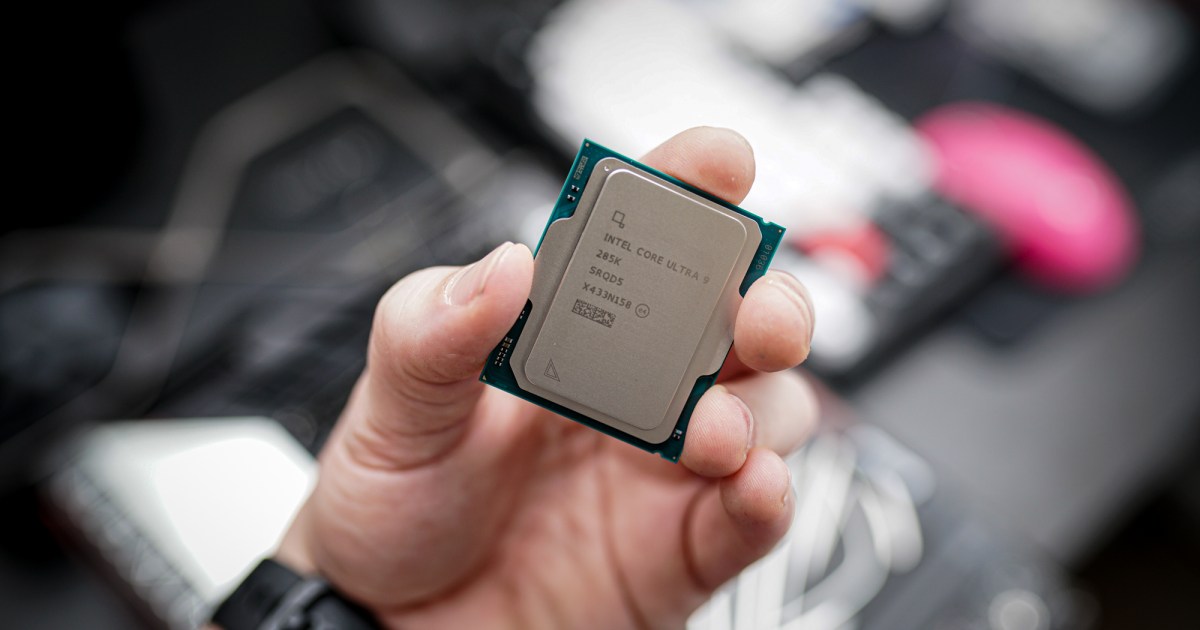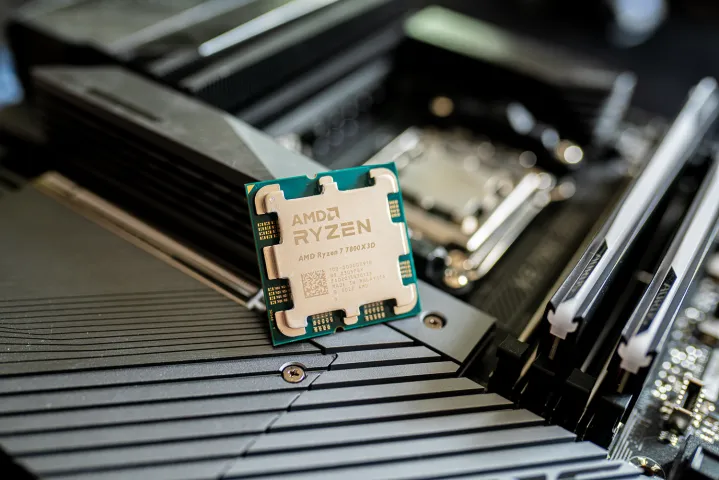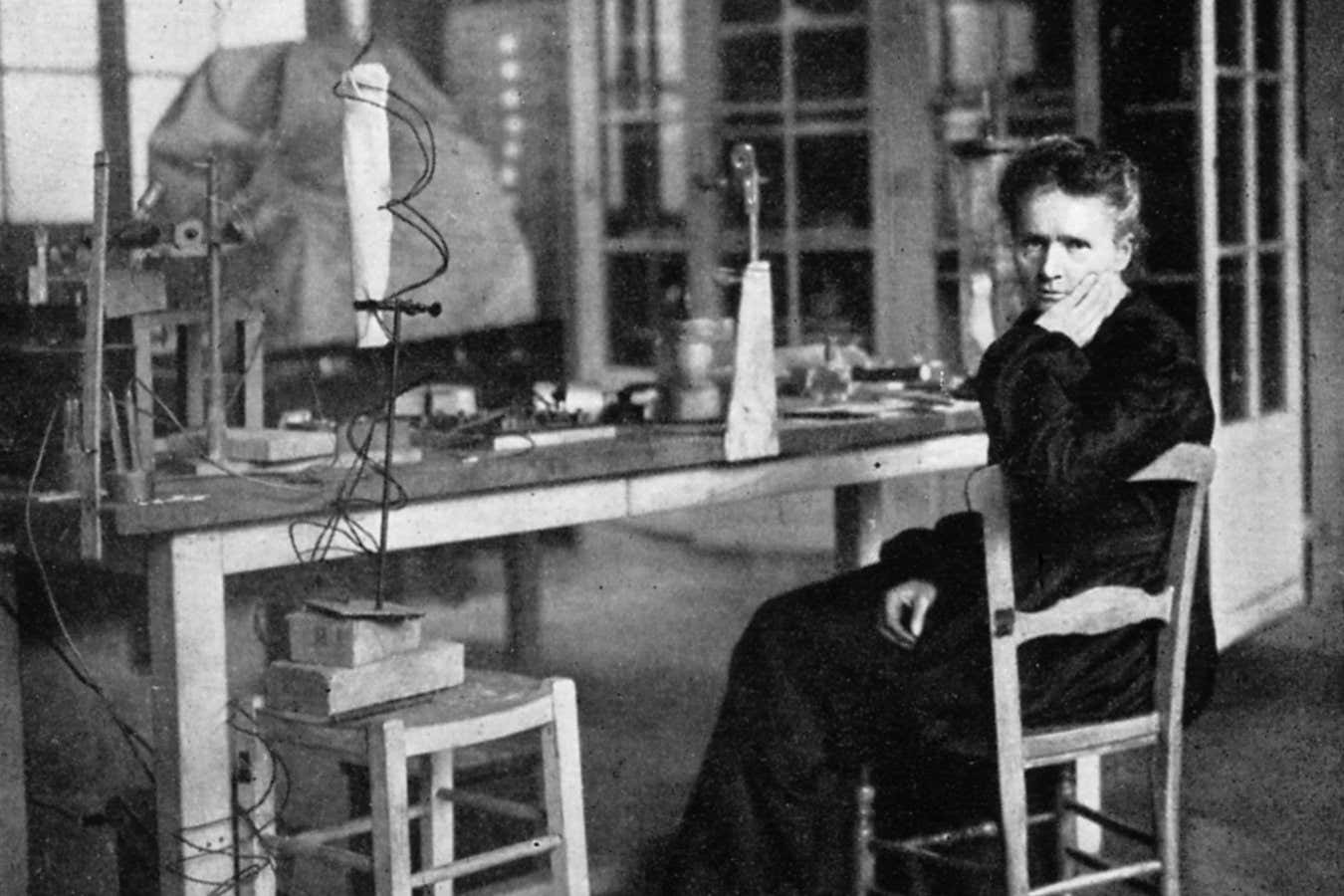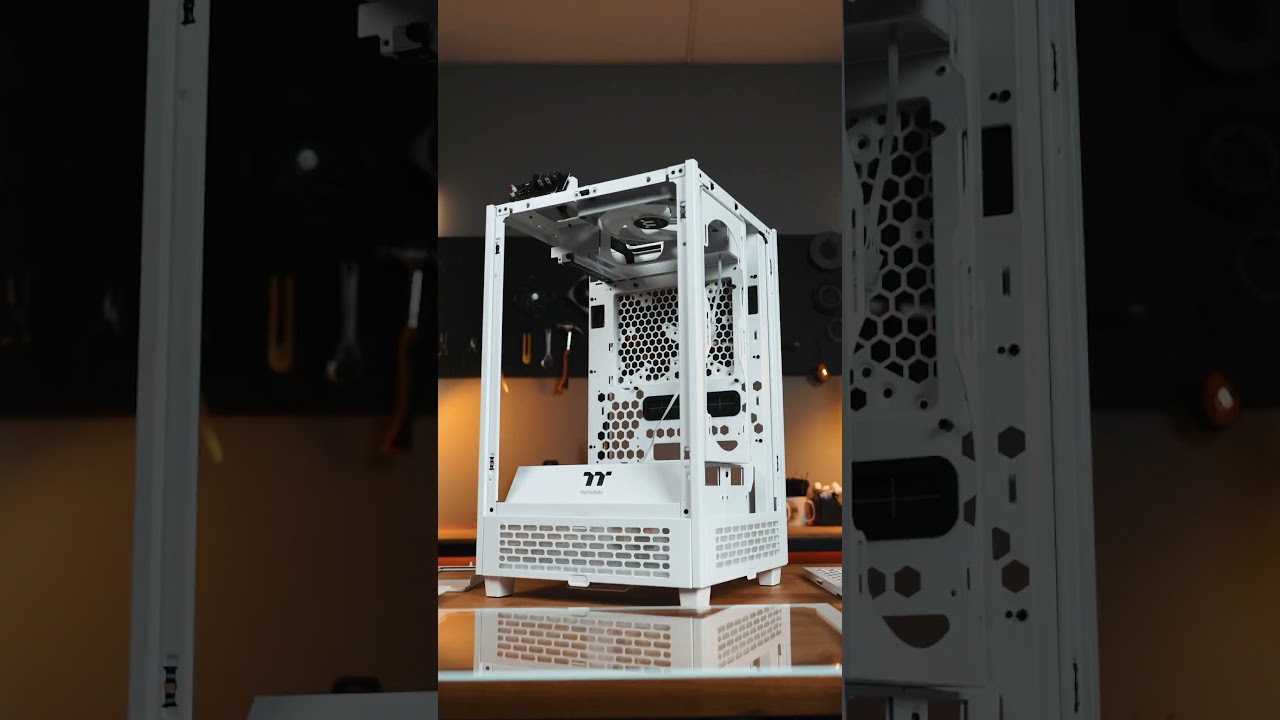Decades ago, Scout Motors helped introduce America to the “sport utility vehicle,” a quirky new automobile that would eventually come to dominate our roads. The brand went bust in 1980 — but now, it’s back, and it’s all-electric.
Technology
Scout Motors mounts an electric comeback with new SUV and truck concepts

Scout, which is now an independent company under the Volkswagen Group, introduced its first new-concept vehicles today: the Terra truck and the Traveler SUV. Both vehicles are body-on-frame, sitting on top a brand-new EV platform unique to Scout. And both could start at under $60,000 (without incentives) when production begins in 2027.
But beyond the novelty of launching a new EV brand when sales are still struggling, and on the eve of a major election that could determine the future of the auto industry, Scout is trying to sell something that no one has really tried before: a genuine throwback that also feels modern and fresh.
“It’s sort of this simple concept, but tough to execute,” said Scout CEO Scott Keogh, defining it as “heritage meets ingenuity.”
The “Connection Machine”
Before we get to the story of Scout’s comeback, let’s run through the specs, because there are some real doozies here:
- Body-on-frame chassis, solid rear axle, and front and rear mechanical lockers for off-road performance
- Projected towing of over 7,000 pounds for the Scout Traveler and over 10,000 pounds for the Scout Terra, both with nearly 2,000 pounds of payload
- Estimated zero to 60mph acceleration in 3.5 seconds, made possible by an estimated 1,000 pound-feet of torque through the four-wheel-drive system
- Vehicle software built upon a modern zonal architecture, enabling over-the-air updates and remote diagnostics
- Bidirectional charging and vehicle-to-home capabilities
- One fully electric trim with up to 350 miles of range and an extended range model with more than 500 miles of range through a gas-powered range extender
There’s a lot more, including a removable cabana roof, optional bench seats in both the front and rear, and a lot of tactile touchpoints, like mechanical door handles, grab bars, and big, chunky dials and switches.
When I first spoke to Keogh earlier this year, he told me he didn’t want to make another hyperminimalist EV, festooned with touchscreens, glassy surfaces, and haptic buttons. He wanted to make something that was real and mechanical — something that you could grab and feel connected to.
“There’s definitely a large segment that wants to bring forth some of the heritage thing,” he said this week. “They don’t want to be isolated from the car… They want to have real switches. They want to have mechanical touch and feel.”
Keogh says the company is calling it the “Connection Machine” — a phrase it appears to be trying to trademark. The idea is that when you’re behind the wheel, tearing through some gravel or ripping up a 100 percent grade, you’re connected to the car through the physical act of driving but also your passengers, bumping up against each other on the same bench seat.
In the zone
That said, there are plenty of design and engineering choices that prove that Scout has its sights set firmly on the horizon. The inclusion of a zonal architecture, rather than a domain-style electrical setup, will help ensure that the vehicles have a lot of “headroom” for future updates, Keogh said, reducing costs not only on the manufacturing side but also for owners through reduced maintenance costs.
Zonal architecture is still relatively niche in the auto industry. Tesla has been doing it for years, but most automakers use domain architectures, with dozens of electronic control units that control everything from power windows and airbags to braking.
Rivian recently switched to a zonal system when it launched the next-gen versions of its R1 vehicles. And VW (which owns Scout) made a big deal of licensing Rivian’s “zonal hardware design” when it announced its plan to invest $5 billion in the EV company.
Scout had the benefit of starting with a “clean sheet,” Keogh told me. “All these things sound quite minor but setting up your IT architecture without a legacy system — this is huge.”
Platform politics
Another thing that caught my attention was the news that the Terra and Traveler would be built on “an all-new and proprietary body-on-frame platform.”
The fact that Scout would develop its own platform, rather than borrow VW’s modular “MEB” electric vehicle platform, might strike some as strange considering how expensive and labor-intensive it is for a brand-new company to develop its own bespoke platform. Sharing platforms is very common, especially when trying to spin up an entirely new production line. (For example, the Audi RS E-tron GT is built on the same platform as the Porsche Taycan.)
“They want to have mechanical touch and feel”
To be sure, VW has been going through its own struggles around EVs. The company’s plug-in models are selling well, but its market share in North America is shrinking. And its software has been plagued by bugs and customer complaints.
But Keogh assured me that Scout wasn’t trying to ignore its advantages over some of its rivals. The company wants to maintain its individuality but will still share some components with its parent company, like drive units and other modules. Considering VW has never before competed in the off-road segment, Scout will take those components and piece them together into something that can tackle the roughest conditions.
“The last thing we want to do is to grab a 100 percent carryover platform with all the modules,” Keogh said, “because then we’d be a badge. And Scout won’t work as a badge at all.”
Range life
The inclusion of a gas-powered range extender is also sure to raise some eyebrows. At a time when car buyers are flocking to hybrids, Scout certainly could have gone that route and no one would have complained. Instead, the company opted to include a small gas-powered generator that charges the battery, rather than powering the engine.
The reason for this was twofold. First, electric trucks have historically struggled with range when carrying heavy payloads or towing large objects. Scout needs to convince truck shoppers that they can do all the truck stuff they love without sacrificing range. The other reason is that Keogh firmly believes that EVs are the future, and he wanted a vehicle that put battery power first, while still offering a smidge of fossil fuels to help quell range anxiety.
“It introduces the buyer to electrification on their American terms,” he said.
Not dystopian
The look of the Terra and Traveler will be immediately recognizable to a lot of people. It successfully blends designs from Ram, Jeep, Range Rover, and Rivian (Scout’s chief designer hails from Stellantis and BMW), while also keeping the same iconic look and feel of the original International Harvester Scouts from the 1960s and ’70s.
Keogh said the goal was to land somewhere between avant-garde and safe. In other words, not too dystopian, like the Tesla Cybertruck, but not overly familiar, like the Ford F-150 Lightning.
“I think it’s got its own stance and its own world,” he said. “But of course, if you see little glimpses of Range Rover, little glimpses of Rivian, little glimpses of Ram, and a little bit of Scout, okay that sounds cool to me.”
Scout already has a storied history — Minnesota Governor Tim Walz is a fan — and now, it’s writing its next chapter.
Technology
Cabinet approves Rs 1000 crore venture capital fund to boost space sector- The Week

India will get a Rs 1000 crore venture capital fund to boost the space sector. The fund aims to address the need for risk capital, as traditional lenders are hesitant to fund startups in this high-tech sector.
There are nearly 250 space startups emerging across the value chain which may need financial support, the cabinet note said.
This approval was given by the union cabinet on Thursday as part of its 2020 space sector reforms. Under these reforms, the government set up IN-SPACe to promote and oversee private sector participation in space activities.
The officials said the Rs 1000 crore venture capital fund would support the growth of India’s space economy, currently valued at S8.4 billion, with a target to reach $44 billion by 2033.
“The proposed government-backed fund will boost investor confidence, attract private capital, and signal the government’s commitment to advancing space reforms,” the cabinet statement said.
The proposed Rs 1,000 crore VC fund is planned to be up to five years from the actual date of start of the fund operations.
The average deployment amount could be Rs 150-250 crore per year, depending on the investment opportunities and fund requirements.
The government said the fund will create a multiplier effect by attracting additional funding for later-stage development, thereby instilling confidence in private investors along with retention of space companies domiciled within India. This will help counter the trend of Indian companies setting base abroad.
Technology
Intel Core Ultra 9 285K vs. Ryzen 7 7800X3D

Intel’s new Core Ultra 9 285K is finally here, promising a boost in performance with a significant reduction in power requirements, at least according to Intel. As you can read in my Core Ultra 9 285K review, Intel’s performance claims aren’t as rosy as reality, especially when stacked up against what is unequivocally the best processor for gaming you can buy: AMD’s Ryzen 7 7800X3D.
I threw both processors on the test bench to pit them head-to-head, looking at performance across productivity and gaming apps, as well as thermals and efficiency. These CPUs target different users, but there are still a lot of interesting comparisons we can look at between them.
Specs

The Core Ultra 9 285K and Ryzen 7 7800X3D are radically different CPUs, and that becomes clear when you compare their specs directly. Although it’s generally not a good idea to compare specs between two CPUs in the same class, the gap in specs here is so large that we can make some interesting observations. The main thing that’s different between the two CPUs is core count.
The Ryzen 7 7800X3D is a fairly straightforward chip in that regard. It comes with eight Zen 4 cores and a total of 16 threads, and it can boost up to 5GHz. That’s not what’s interesting about the CPU. It’s the 104MB of cache packed on top of the CPU die, split between 8MB of L2 cache and 96MB of L3 cache thanks to AMD’s 3D V-Cache packaging tech.
| Core Ultra 9 285K | Ryzen 7 7800X3D | |
| Cores/Threads | 24/24 (8P+16E) | 8/16 |
| Boost clock speed | 5.7GHz | 5GHz |
| Base clock speed | 3.7GHz | 4.2GHz |
| Cache (L2 + L3) | 76MB | 104MB |
| TDP | 250W | 120W |
| Price | $589 | $450 |
The Core Ultra 9 285K doesn’t have any fancy 3D V-Cache, but it still has a few tricks of its own. It’s a 24-core CPU, but unlike the Ryzen 7 7800X3D, it doesn’t come with simultaneous multi-threading (SMT). Each core only has a single thread. In addition, Intel uses its hybrid architecture, mixing together the Lion Cove P-core design with the Skymont E-core design. According to Intel, the E-cores are the main performance drivers here, unlike with the Core i9-14900K, where the E-cores were relatively weak.
With more cores and higher clock speeds, it shouldn’t come as a surprise that the Core Ultra 9 285K has much higher power requirements. I’ll address efficiency directly a bit lower down in this comparison, but I can tell you now that, under a full load, the Core Ultra 9 285K indeed draws twice as much (or more) power than the Ryzen 7 7800X3D — though usually with much better performance.
Pricing

The Core Ultra 9 285K and Ryzen 7 7800X3D force you to think about pricing because, depending on what you’re using your PC for, you can save quite a bit of money. The Core Ultra 9 285K is newer, and it’s the flagship chip from Intel’s latest range, so you’ll spend $589 if you want to pick it up now. The price will drop over time — the Core i9-14900K is about $450 a year after releasing — but until we see the next generation from Intel, you can expect to spend over $500.
The Ryzen 7 7800X3D is much cheaper at $450, though I’ve seen some strange price shifts with the CPU over the past several months. Just a few weeks before publishing this comparison, the Ryzen 7 7800X3D was sold out everywhere, and prior to that, you could commonly find it for around $320. Now, at the time of publishing, you’ll find it between $450 and $500, but I expect the price will drop very soon.
AMD has confirmed that its next-gen 3D V-Cache CPU is arriving on November 7, so depending on when you’re reading this, make sure to check in on the price of the Ryzen 7 7800X3D. If the new CPU is out by then, I expect we’ll see the price drop to around $350 to $400.
Even with its higher price, the Ryzen 7 7800X3D is significantly cheaper than the Core Ultra 9 285K — $139 cheaper, at least, and close to $239 cheaper if the Ryzen 7 7800X3D drops in price.
Productivity performance

Here’s some quick proof that the Core Ultra 9 285K and Ryzen 7 7800X3D are in completely different weight classes. As you can see from Cinebench R24 above, the Core Ultra 9 285K is much faster than the Ryzen 7 7800X3D — it’s not even close. Intel says this CPU is particularly strong in a ray-traced renderer line Cinebench, but even if you dropped 10% or 15% of the performance from the Core Ultra 9 285K, it would still be miles ahead of the Ryzen 7 7800X3D.

For more of a mixed-use benchmark, take a look at Geekbench 6. The Core Ultra 9 285K still runs away with multi-core performance, but the single-core delta is much smaller. And despite the clear lead in multi-core performance, that gap is smaller, too. Throughout my testing, one thing became clear — the Core Ultra 9 285K is really fast in certain applications, but that performance doesn’t apply everywhere.

A great example of that is Photoshop. You’d assume that the raw multi-core advantage of the Core Ultra 9 285K would mean it obviously wins against the Ryzen 7 7800X3D, but that’s not the case. In fact, the Ryzen 7 7800X3D is faster in Photoshop based on my testing. That’s not good considering the price and spec gap between these two CPUs. You’d expect the Core Ultra 9 285K to mop the floor with the Ryzen 7 7800X3D across all productivity applications.

In Premiere Pro, the Core Ultra 9 285K reclaims a dominant spot, but it really shouldn’t be this close. Not only is the Core Ultra 9 285K a much more capable CPU, it also has access to QuickSync in Premiere Pro, which speeds up performance significantly. The fact that these two CPUs are even competitive in Premiere shows how the performance of the Core Ultra 9 285K can be disappointing in certain apps.
Gaming performance

Gaming performance is where we see a more consistent divergence. The Ryzen 7 7800X3D crushes. Across the 10 games I tested, the Ryzen 7 7800X3D didn’t lose a single one. Sometimes it’s only showing a minor performance improvement, but in games like F1 22 and Cyberpunk 2077, the Ryzen 7 7800X3D provides a transformative uplift in gaming performance.
Not all games respond well to the additional cache on the Ryzen 7 7800X3D. As you can see from titles like Assassin’s Creed Mirage and Black Myth: Wukong, there’s some other factor limiting the performance of the processor — in most cases, your graphics card. However, other games can leverage the additional cache in quite a big way, as shown off by Final Fantasy XIV, Tiny Tina’s Wonderlands, and even Red Dead Redemption 2.
For the Core Ultra 9 285K, it can only hope to match the Ryzen 7 7800X3D, and in most games, it’s not even close to doing that. If you’re focused mainly on gaming, there’s really no contest here. The Ryzen 7 7800X3D absolutely crushes the Core Ultra 9 285K, and it’s significantly cheaper.
Thermals and efficiency

Another area where the Ryzen 7 7800X3D leads is efficiency. It not only has much lower rated power, it can also deliver higher performance in games while consuming less power. You can see that in action in the chart above. Looking solely at peak power draw during these games, the Ryzen 7 7800X3D stayed much more efficient under a heavy workload.
That’s not be critical of Intel. As you can see from the Core i9-14900K, Intel made massive efficiency improvements this generation, and it’s often able to deliver similar performance under 100 watts. But it’s still more power than the Ryzen 7 7800X3D, which rarely goes above 50 watts in games.

Temperature is a different story. On average, the Core Ultra 9 285K was a bit cooler than the Ryzen 7 7800X3D while playing games. It’s not a massive difference, but I tested with a 360mm all-in-one liquid cooler. In a small form factor PC, those temperature differences can really add up, and the Core Ultra 9 285K is set up to handle a more thermally constrained environment better.
It’s important to remember the design of 3D V-Cache CPUs. The cache is stacked directly on top of the cores, serving as an insolating layer between the cores and the integrated heat spreader (IHS). That’s why the Ryzen 7 7800X3D, and other 3D V-Cache CPUs, tend to run a bit hotter and why they aren’t unlocked for overclocking.
The gaming king reigns supreme

There’s really no contest here if you’re a gamer — the Ryzen 7 7800X3D is the way to go. It’s much faster, and it’s cheaper, and although productivity performance lags, the CPU still puts up a surprisingly impressive fight in apps like Premiere Pro and Photoshop.
The natural counter to that is productivity performance. If that’s what you care about, the Core Ultra 9 285K is the way to go. However, the inconsistent performance I saw with Intel’s latest CPU is worth keeping in mind. If you want good productivity performance and gaming in equal stride, I’d push you toward Intel’s Core i9-14900K or AMD’s latest Ryzen 9 9950X instead, the former of which is available for around $450.
Technology
iPhone 17 Pro Max rumored again to feature a narrower Dynamic Island

Technology analyst Jeff Pu suggests that the iPhone 17 Pro Max may feature a ‘much narrower’ Dynamic Island than its predecessors, such as the iPhone 16 Pro. This reiterates information that Pu first shared in May this year.
iPhone 17 Pro Max could use a new lens technology for Face ID
According to the analyst, the iPhone 17 Pro Max will adopt a ‘metalens’ for Face ID, which would result in a ‘much narrower’ Dynamic Island. For those curious, the ‘metalens’ is a thin, flat lens with microscopic patterns etched onto it, allowing it to focus light more precisely compared to the standard curved lenses of an iPhone. Unfortunately, Pu does not explain how Apple plans to implement this technology.
Apple introduced the Dynamic Island with the iPhone 14 Pro models, replacing the notch. Since then, the pill-shaped cutout has remained the same size across all models in the iPhone 15 and 16 lineups. If true, a narrower Dynamic Island would offer a refreshed look for the successor to the iPhone 16 Pro Max.
According to a previous report, the iPhone 17 Pro models may get notable zoom camera improvements. A recent report from The Elec also suggests that Apple could use the Watch Series 10’s LTPO3 display technology for future iPhones. While LTPO2 technology utilizes oxide for two switching TFTs, LTPO3 goes a step further by incorporating oxide into the driving TFT as well.
A more efficient display for future iPhones
LTPO3 allows displays to dynamically switch between refresh rates without the need for an additional component between the graphics controller and the GPU. As a result, LTPO3 panels consume less power than LTPO2 panels, even though both can reach as low as 1Hz.
This new display tech is also expected to offer improved viewing angles for future iPhones. For those interested in numbers, the Watch Series 10 (which uses LTPO3) is 40% brighter when viewed off-angle compared to its predecessor, which uses an LTPO2 display.
The improved power efficiency of LTPO3 technology could translate to longer battery life compared to iPhones with older display tech. However, the report does not specify when Apple might begin incorporating this new display technology into its iPhone lineup.
In terms of performance, the iPhone 17 Pro models will feature the A19 Pro chip. It utilizes TSMC’s 3nm process node and is likely to deliver better energy efficiency, faster processing, and improved overall performance.
Technology
University Research Validates Blind Screen™’s Game-Changing 49% Heat Reduction Technology in Race to Net Zero


A Derby company’s innovative window blind system has been scientifically proven to dramatically reduce heat loss in a series of tests carried out by researchers at the University of Salford.
Blind Screen™ is set to unveil its next-generation thermal solution, the Blind Screen™ 02 DT, at the prestigious British Blinds & Shutter Association Exhibition. The highly anticipated product launch will take place from October 27-29, 2024, at the Coventry Building Society Arena. This latest innovation builds upon the company’s scientifically proven thermal efficiency technology, promising to further revolutionise the window covering industry.
Blind Screen™ at Pride Park has invented an innovative contemporary multi-function blinds system which is manufactured in the UK and is now fitted by more than 1,000 national and independent blind companies across the UK.
Blind Screen™ products combine ultra-strength net and honeycomb fabrics with several unique features including 100% black out and thermal insulation technology with sideways opening fly, pollen and haze screens.
This not only increases the energy efficiency in any type of residential or commercial building but also protects against environmental pollutants and extreme outdoor temperatures.
The Blind Screen™ system was tested for heat retention at the University of Salford’s Energy House 2.0 test facility as part of Innovate UK Future Homes Study.
The rigorous tests showed that the Blind Screen™ system reduced heat loss by 49% compared with just double glazing alone – reinforcing Blind Screen™’s claim that it is probably the most thermally-efficient blind in the UK if not the world.
Professor Will Swan, Director of Energy House Labs at the University of Salford, explained: “Our work with Blind Screen™ is a perfect example of how the Future Homes Innovation Accelerator programme is supporting companies to innovate and grow.
“The development of new energy saving products is an essential step for the UK in meeting its Climate Change goals and minimising energy costs for householders.
“Our previous research in the area of blinds, curtains, and window coverings has demonstrated that they can make a valuable contribution to energy savings and reducing carbon emissions for householders.
“Blind Screen™ has recognised this opportunity and through working with the University of Salford and making use of our unique testing facilities, they have developed a class leading thermal window blind.
“We are very pleased with this successful outcome that will help cut energy bills and support the future growth of the company.
Blind Screen™ is the brainchild of entrepreneurs Lenny Reynolds, who has operated in the blinds industry for more than 20 years, and marketing and lead generation expert Paul Cheetham MCIM.
Lenny Reynolds explained: “Blind Screen™ offers a totally new category in the highly competitive industry which has been lacking any innovation since the launch and then mass production of shutters more than 20 years ago.
“We have developed the world’s first 100% blackout sideways motion blind with new thermal efficient fabric and we were keen to get this independently tested by the University of Salford.”
“The heat efficiency test results are amazing and reinforces what we and the growing number of blind fitting companies across the UK – and soon the world – already know that this is a game-changer in the blinds market.”
“This research further strengthens our position in the highly-competitive market and will pave the way for further research and development in new products which we plan to take worldwide through a number of top level partnerships.”
Paul Cheetham continued: “The past 12 months have been an amazing journey for Blind Screen™ so far, we have amassed a staggering worldwide audience of 1.4 Million followers and close to 800 million views across our social media platforms.
“After a series of soft launches at international trade shows and consumer exhibitions such as Grand Designs Live, we have already massively grown the company by teaming up with trade partners and educating the homeowners through organic social media with a huge following.
“We are committed to facilitating the growth of fellow small businesses who will sell and install Blind Screen™ in their local areas through unrivalled product design, training, lead generation and customer support and now have our sights set on international partnerships.”
Professor Kathryn Mitchell CBE DL, Vice-Chancellor, University of Derby added,
“It has been a pleasure supporting Blind Screen Limited in their innovation journey over the last 12 months through. The University of Derby’s College of Science and Engineering have provided guidance and expertise through our lead academics in Materials and Manufacturing Engineering and Zero Carbon for many aspects of the product development for their new range, including design, 3D printing and prototyping as well as thermal testing. Having just completed an Accelerated Knowledge Transfer Partnership with Blind Screen Limited, we are now excited to expand our collaboration and are looking forward to further supporting their journey and growth.”
Led by Innovate UK on behalf of UK Research and Innovation, the pilot Innovation Accelerator programme is investing £100m in 26 transformative R&D projects to accelerate the growth of three high-potential innovation clusters – Glasgow City Region, Greater Manchester and West Midlands. Supporting the Government’s levelling-up agenda, this is a new model of R&D decision-making that empowers local leaders to harness innovation in support of regional economic growth and help attract private R&D investment and develop future technologies.
Science & Environment
The Elements of Marie Curie review: Dava Sobel’s biography of Marie Curie shows how she helped women into science


Marie Curie pictured at work in her laboratory in Paris, in 1912
Universal History Archive/Getty Images
The Elements of Marie Curie
Dava Sobel (Fourth Estate, UK; Grove Atlantic, US)
ON 7 November 1867, Marya Salomea Sklodowska was born in Warsaw, then part of the Russian Empire. She was the youngest of five children, and became known as “Manya” by her family.
She was a voraciously curious child who learned to read at the age of 4 and developed a fascination with science, thanks in large part to her father, a teacher of physics and mathematics. Even so, no one could…
Servers computers
The Tower 200 Looks Good from any Angle 😉

\\\\\ Can’t get enough of us? (It’s OK, we understand, we’re pretty great 😎) ///////////
Hit us up on Instagram 👉 https://bit.ly/3RDVXJc
Drop a like on Facebook: 👉 https://bit.ly/3x2iS7o
Visit our TikTok 👉 https://bit.ly/3YweBoH
Or see some hot takes on Twitter 👉 https://bit.ly/3K309R9
Looking for some tech help, giveaways or just want to be a part of the community?
👾 You can join our Discord server 👉https://discord.gg/vewj4fP
If you’re just after some more info though
Website 👉 https://bit.ly/3JLDxUN .
source
-

 Technology4 weeks ago
Technology4 weeks agoIs sharing your smartphone PIN part of a healthy relationship?
-

 Science & Environment1 month ago
Science & Environment1 month agoHyperelastic gel is one of the stretchiest materials known to science
-

 Science & Environment1 month ago
Science & Environment1 month agoHow to unsnarl a tangle of threads, according to physics
-

 Science & Environment1 month ago
Science & Environment1 month ago‘Running of the bulls’ festival crowds move like charged particles
-

 Science & Environment1 month ago
Science & Environment1 month agoMaxwell’s demon charges quantum batteries inside of a quantum computer
-

 Technology1 month ago
Technology1 month agoWould-be reality TV contestants ‘not looking real’
-

 Science & Environment4 weeks ago
Science & Environment4 weeks agoX-rays reveal half-billion-year-old insect ancestor
-

 Science & Environment1 month ago
Science & Environment1 month agoSunlight-trapping device can generate temperatures over 1000°C
-

 Technology4 weeks ago
Technology4 weeks agoUkraine is using AI to manage the removal of Russian landmines
-

 Science & Environment1 month ago
Science & Environment1 month agoLiquid crystals could improve quantum communication devices
-

 Science & Environment1 month ago
Science & Environment1 month agoQuantum ‘supersolid’ matter stirred using magnets
-

 TV3 weeks ago
TV3 weeks agoসারাদেশে দিনব্যাপী বৃষ্টির পূর্বাভাস; সমুদ্রবন্দরে ৩ নম্বর সংকেত | Weather Today | Jamuna TV
-

 News3 weeks ago
News3 weeks agoMassive blasts in Beirut after renewed Israeli air strikes
-

 Football3 weeks ago
Football3 weeks agoRangers & Celtic ready for first SWPL derby showdown
-

 Science & Environment1 month ago
Science & Environment1 month agoLaser helps turn an electron into a coil of mass and charge
-

 Science & Environment1 month ago
Science & Environment1 month agoA new kind of experiment at the Large Hadron Collider could unravel quantum reality
-

 Womens Workouts1 month ago
Womens Workouts1 month ago3 Day Full Body Women’s Dumbbell Only Workout
-

 News3 weeks ago
News3 weeks ago▶ Hamas Spent $1B on Tunnels Instead of Investing in a Future for Gaza’s People
-

 Technology3 weeks ago
Technology3 weeks agoSamsung Passkeys will work with Samsung’s smart home devices
-

 Business3 weeks ago
Business3 weeks agoWhen to tip and when not to tip
-

 MMA3 weeks ago
MMA3 weeks ago‘Uncrowned queen’ Kayla Harrison tastes blood, wants UFC title run
-

 Sport3 weeks ago
Sport3 weeks agoBoxing: World champion Nick Ball set for Liverpool homecoming against Ronny Rios
-

 News3 weeks ago
News3 weeks agoNavigating the News Void: Opportunities for Revitalization
-

 Technology4 weeks ago
Technology4 weeks agoMicrophone made of atom-thick graphene could be used in smartphones
-

 Sport3 weeks ago
Sport3 weeks agoMan City ask for Premier League season to be DELAYED as Pep Guardiola escalates fixture pile-up row
-

 Science & Environment1 month ago
Science & Environment1 month agoPhysicists have worked out how to melt any material
-

 Science & Environment1 month ago
Science & Environment1 month agoWhy this is a golden age for life to thrive across the universe
-

 Science & Environment1 month ago
Science & Environment1 month agoQuantum forces used to automatically assemble tiny device
-

 News1 month ago
News1 month ago▶️ Hamas in the West Bank: Rising Support and Deadly Attacks You Might Not Know About
-
Business3 weeks ago
DoJ accuses Donald Trump of ‘private criminal effort’ to overturn 2020 election
-

 MMA3 weeks ago
MMA3 weeks agoPereira vs. Rountree prediction: Champ chases legend status
-

 News3 weeks ago
News3 weeks ago‘Blacks for Trump’ and Pennsylvania progressives play for undecided voters
-

 Sport3 weeks ago
Sport3 weeks agoWales fall to second loss of WXV against Italy
-

 MMA3 weeks ago
MMA3 weeks agoDana White’s Contender Series 74 recap, analysis, winner grades
-

 Sport3 weeks ago
Sport3 weeks agoAaron Ramsdale: Southampton goalkeeper left Arsenal for more game time
-

 Science & Environment1 month ago
Science & Environment1 month agoA slight curve helps rocks make the biggest splash
-

 Technology1 month ago
Technology1 month agoMeta has a major opportunity to win the AI hardware race
-

 Science & Environment1 month ago
Science & Environment1 month agoITER: Is the world’s biggest fusion experiment dead after new delay to 2035?
-

 Science & Environment1 month ago
Science & Environment1 month agoNerve fibres in the brain could generate quantum entanglement
-

 Technology4 weeks ago
Technology4 weeks agoRussia is building ground-based kamikaze robots out of old hoverboards
-

 MMA3 weeks ago
MMA3 weeks agoJulianna Peña trashes Raquel Pennington’s behavior as champ
-

 Technology3 weeks ago
Technology3 weeks agoMusk faces SEC questions over X takeover
-

 Football3 weeks ago
Football3 weeks agoWhy does Prince William support Aston Villa?
-

 Technology3 weeks ago
Technology3 weeks agoThis AI video generator can melt, crush, blow up, or turn anything into cake
-

 Sport3 weeks ago
Sport3 weeks agoSturm Graz: How Austrians ended Red Bull’s title dominance
-

 News3 weeks ago
News3 weeks agoFamily plans to honor hurricane victim using logs from fallen tree that killed him
-

 Science & Environment1 month ago
Science & Environment1 month agoHow to wrap your mind around the real multiverse
-

 Science & Environment1 month ago
Science & Environment1 month agoNuclear fusion experiment overcomes two key operating hurdles
-

 Technology1 month ago
Technology1 month agoWhy Machines Learn: A clever primer makes sense of what makes AI possible
-

 Science & Environment1 month ago
Science & Environment1 month agoTime travel sci-fi novel is a rip-roaringly good thought experiment
-

 News1 month ago
News1 month ago▶️ Media Bias: How They Spin Attack on Hezbollah and Ignore the Reality
-

 Money3 weeks ago
Money3 weeks agoWetherspoons issues update on closures – see the full list of five still at risk and 26 gone for good
-

 Technology3 weeks ago
Technology3 weeks agoThe best budget robot vacuums for 2024
-

 Technology3 weeks ago
Technology3 weeks agoGmail gets redesigned summary cards with more data & features
-
Business3 weeks ago
Sterling slides after Bailey says BoE could be ‘a bit more aggressive’ on rates
-

 Technology3 weeks ago
Technology3 weeks agoMicrosoft just dropped Drasi, and it could change how we handle big data
-

 Sport3 weeks ago
Sport3 weeks agoChina Open: Carlos Alcaraz recovers to beat Jannik Sinner in dramatic final
-

 MMA3 weeks ago
MMA3 weeks agoPereira vs. Rountree preview show live stream
-

 Sport3 weeks ago
Sport3 weeks agoCoco Gauff stages superb comeback to reach China Open final
-

 Entertainment3 weeks ago
Entertainment3 weeks agoNew documentary explores actor Christopher Reeve’s life and legacy
-

 Sport4 weeks ago
Sport4 weeks agoWorld’s sexiest referee Claudia Romani shows off incredible figure in animal print bikini on South Beach
-
Business3 weeks ago
Bank of England warns of ‘future stress’ from hedge fund bets against US Treasuries
-

 Business3 weeks ago
Business3 weeks agoChancellor Rachel Reeves says she needs to raise £20bn. How might she do it?
-

 News3 weeks ago
News3 weeks agoWoman who died of cancer ‘was misdiagnosed on phone call with GP’
-

 Technology3 weeks ago
Technology3 weeks agoTexas is suing TikTok for allegedly violating its new child privacy law
-

 Technology3 weeks ago
Technology3 weeks agoThe best shows on Max (formerly HBO Max) right now
-

 Sport3 weeks ago
Sport3 weeks ago2024 ICC Women’s T20 World Cup: Pakistan beat Sri Lanka
-

 Technology3 weeks ago
Technology3 weeks agoEpic Games CEO Tim Sweeney renews blast at ‘gatekeeper’ platform owners
-

 Science & Environment3 weeks ago
Science & Environment3 weeks agoMarkets watch for dangers of further escalation
-

 MMA3 weeks ago
MMA3 weeks agoAlex Pereira faces ‘trap game’ vs. Khalil Rountree
-

 News3 weeks ago
News3 weeks agoGerman Car Company Declares Bankruptcy – 200 Employees Lose Their Jobs
-

 MMA3 weeks ago
MMA3 weeks agoUFC 307 preview show: Will Alex Pereira’s wild ride continue, or does Khalil Rountree shock the world?
-

 MMA3 weeks ago
MMA3 weeks ago‘I was fighting on automatic pilot’ at UFC 306
-

 MMA3 weeks ago
MMA3 weeks agoKetlen Vieira vs. Kayla Harrison pick, start time, odds: UFC 307
-
News1 month ago
the pick of new debut fiction
-

 News1 month ago
News1 month agoOur millionaire neighbour blocks us from using public footpath & screams at us in street.. it’s like living in a WARZONE – WordupNews
-

 Football3 weeks ago
Football3 weeks agoSimo Valakari: New St Johnstone boss says Scotland special in his heart
-

 Technology3 weeks ago
Technology3 weeks agoJ.B. Hunt and UP.Labs launch venture lab to build logistics startups
-

 News3 weeks ago
News3 weeks agoHull KR 10-8 Warrington Wolves – Robins reach first Super League Grand Final
-

 Technology3 weeks ago
Technology3 weeks agoOpenAI secured more billions, but there’s still capital left for other startups
-
Business3 weeks ago
The search for Japan’s ‘lost’ art
-

 Business3 weeks ago
Business3 weeks agoStark difference in UK and Ireland’s budgets
-

 News3 weeks ago
News3 weeks agoBalancing India and China Is the Challenge for Sri Lanka’s Dissanayake
-

 News3 weeks ago
News3 weeks agoHeavy strikes shake Beirut as Israel expands Lebanon campaign
-

 TV3 weeks ago
TV3 weeks agoLove Island star sparks feud rumours as one Islander is missing from glam girls’ night
-

 TV3 weeks ago
TV3 weeks agoPhillip Schofield accidentally sets his camp on FIRE after using emergency radio to Channel 5 crew
-

 News3 weeks ago
News3 weeks agoHeartbreaking end to search as body of influencer, 27, found after yacht party shipwreck on ‘Devil’s Throat’ coastline
-

 Technology3 weeks ago
Technology3 weeks agoPopular financial newsletter claims Roblox enables child sexual abuse
-
Business3 weeks ago
Head of UK Competition Appeal Tribunal to step down after rebuke for serious misconduct
-

 Technology3 weeks ago
Technology3 weeks agoApple iPhone 16 Plus vs Samsung Galaxy S24+
-

 TV3 weeks ago
TV3 weeks agoMaayavi (මායාවී) | Episode 23 | 02nd October 2024 | Sirasa TV
-
Politics3 weeks ago
Rosie Duffield’s savage departure raises difficult questions for Keir Starmer. He’d be foolish to ignore them | Gaby Hinsliff
-

 Health & fitness3 weeks ago
Health & fitness3 weeks agoNHS surgeon who couldn’t find his scalpel cut patient’s chest open with the penknife he used to slice up his lunch
-

 Money3 weeks ago
Money3 weeks agoPub selling Britain’s ‘CHEAPEST’ pints for just £2.60 – but you’ll have to follow super-strict rules to get in
-

 Technology3 weeks ago
Technology3 weeks agoIf you’ve ever considered smart glasses, this Amazon deal is for you
-

 News3 weeks ago
News3 weeks agoLiverpool secure win over Bologna on a night that shows this format might work
-

 Technology3 weeks ago
Technology3 weeks agoAmazon’s Ring just doubled the price of its alarm monitoring service for grandfathered customers
-

 Technology3 weeks ago
Technology3 weeks agoHow to disable Google Assistant on your Pixel Watch 3
-
Business3 weeks ago
Can liberals be trusted with liberalism?
-

 Technology3 weeks ago
Technology3 weeks agoA very underrated horror movie sequel is streaming on Max


You must be logged in to post a comment Login